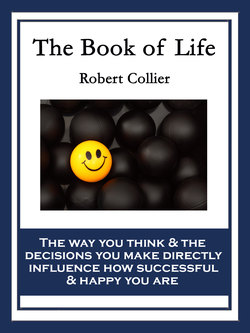Читать книгу The Book of Life - Robert Collier - Страница 7
На сайте Литреса книга снята с продажи.
In the Beginning
ОглавлениеIt matters not whether you believe that mankind dates back to the primitive ape-man of 500,000 years ago, or sprang full-grown from the mind of the creator. In either event, there had to be a first cause—a creator. Some power had to bring to this earth the first germ of life, and the creation is no less wonderful if it started with the lowliest form of plant life and worked up through countless ages into the highest product of today’s civilization, than if the whole were created in six days.
In the beginning, this earth was just a fire mist—six thousand or a billion years ago—what does it matter which?
The one thing that does matter is that some time, some way, there came to this planet the germ of life—the life principle that animates all nature—plant, animal, and man. If we accept the scientists’ version of it, the first form in which life appeared upon earth was the humble algae—a jelly-like mass that floated upon the waters. This, according to the scientists, was the beginning, the dawn of life upon the earth.
Next came the first bit of animal life—the lowly amoeba, a sort of jelly fish, consisting of a single cell, without vertebrae, and with very little else to distinguish it from the water round about. But it had life—the first bit of animal life—and from that life, according to the scientists, we could trace everything we have and are today.
All the millions of forms and shapes and varieties of plants and animals that have since appeared are but different manifestations of life—formed to meet differing conditions. For millions of years this “Life Germ” was threatened by every kind of danger—from floods, from earthquakes, from droughts, from desert heat, from glacial cold, from volcanic eruptions—but to it each new danger was merely an incentive to finding a new resource, to putting forth Life in some new shape.
To meet one set of needs, it formed the dinosaur—to meet another, the butterfly. Long before it worked up to man, we see its unlimited resourcefulness shown in a thousand ways. To escape danger in the water, it sought land. Pursued on land, it took to the air. To breathe in the sea, it developed gills. Stranded on land, it perfected lungs. To meet one kind of danger it grew a shell. For another, a sting. To protect itself from glacial cold, it grew fur, in temperate climates, hair. Subject to alternate heat and cold, it produced feathers. But ever, from the beginning, it showed its power to meet every changing condition, to answer every creature need.
Had it been possible to kill this “Life Idea,” it would have perished ages ago, when fire and flood, drought and famine followed each other in quick succession. But obstacles, misfortunes, cataclysms, were to it merely new opportunities to assert its power. In fact, it required obstacles to awaken it, to show its energy and resource.
The great reptiles, the monster beasts of antiquity passed on. But the “Life Principle” stayed, changing as each age changed, always developing, and always improving.
Whatever power it was that brought this “Life Idea” to the earth, it came endowed with unlimited resource, unlimited energy, unlimited Life! No other force can defeat it. No obstacle can hold it back. All through the history of life and mankind you can see its directing intelligence—call it nature, call it providence, call it what you will—rising to meet every need of life.
